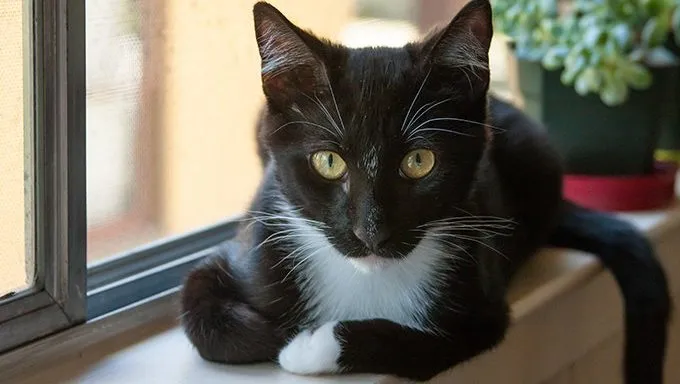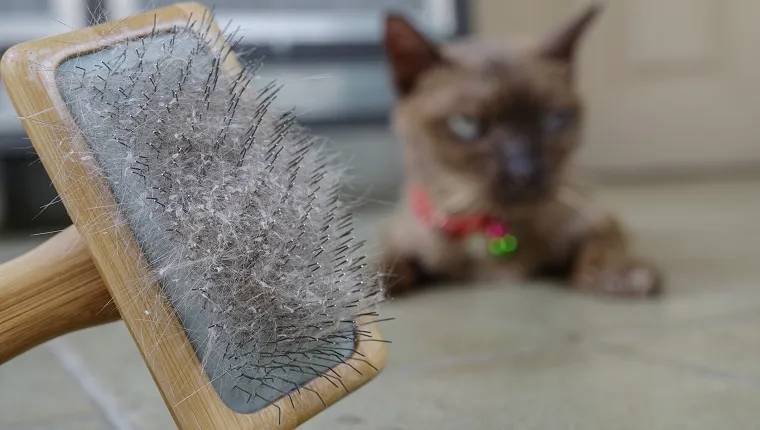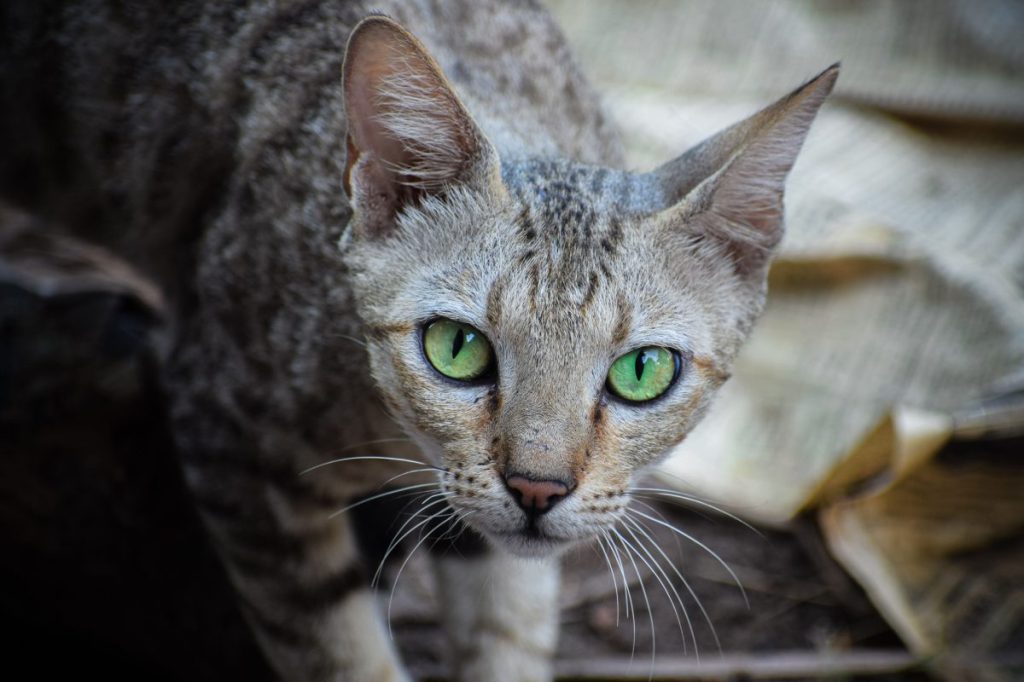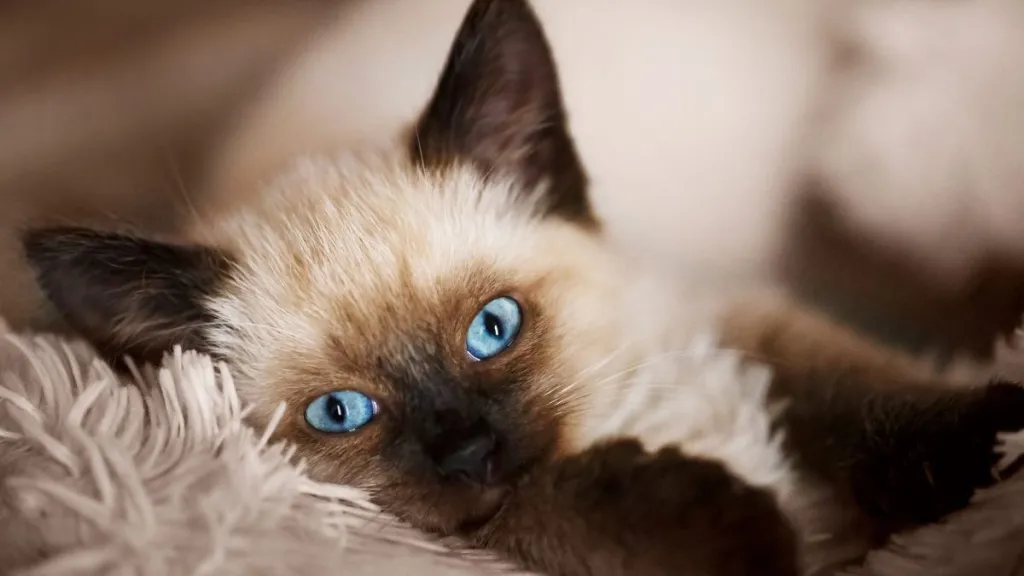Temperament and Friendliness
Feline Affectionate Nature

The temperament and friendliness of a cat can vary significantly from breed to breed, and the Balinese cat personality is no exception. The Balinese cat, known for its stunning appearance and charming demeanor, has earned a reputation as a friendly and affectionate feline companion.
One of the defining characteristics of the Balinese cat is its high level of friendliness towards humans. They are often described as outgoing and social, enjoying the company of their human family members and even other pets in the household.
Balinese cats have a strong desire to interact with their surroundings, making them excellent companions for those who value feline affection. They love to play, explore, and engage in various forms of exercise, such as chasing toys or climbing curtains.
Despite their high energy levels, Balinese cats are not naturally aggressive or territorial. In fact, they tend to get along well with other animals, including dogs, making them an excellent choice for families who have multiple pets.
When it comes to feline affectionate nature, the Balinese cat stands out as a breed that loves to receive and show affection. They are known to form strong bonds with their human family members, often seeking physical contact through head butting, kneading, or rubbing against legs.
In terms of communication, Balinese cats are vocal animals that use various forms of expression to convey their emotions and needs. They may meow loudly to indicate hunger or attention-seeking behavior, while softer meows can signal contentment or affection.
However, it’s worth noting that every cat is unique, and individual personalities within the Balinese breed can vary significantly. While some Balinese cats may be naturally more reserved or independent, they generally possess a friendly and curious nature that makes them an excellent fit for families with children.
Overall, the Balinese cat’s temperament and friendliness have earned it a loyal following among feline enthusiasts. Their outgoing personalities, playful energy, and affectionate nature make them an excellent choice for those seeking a loving and engaging feline companion.
In conclusion, if you’re considering bringing a new furry friend into your family, the Balinese cat’s friendly and cuddly demeanor makes it an excellent breed to consider. With proper care and attention, these stunning cats can bring joy and companionship to any household, making them an ideal addition to families with children or those seeking a loving feline companion.
The Balinese breed is renowned for its affectionate personality, often described as sweettempered and loving. According to the International Cat Association (TICA), these cats are known for their attachment to their human family members. They form strong bonds with their owners, seeking attention and interaction.
The Balinese breed has a unique and endearing personality that sets it apart from other feline breeds. Known for their sweet temperament, these cats are renowned for their affectionate nature.
They possess an innate ability to form strong bonds with their human family members, which is one of the reasons why they have gained popularity as domestic pets.
In fact, according to the International Cat Association (TICA), the Balinese cat breed is characterized by its attachment to its owners. These cats seek attention and interaction from their family members and are known to be very affectionate in return.
The Balinese cat’s friendly nature makes it an excellent companion for families with children, as they are patient, gentle, and playful. They also get along well with other pets in the household, making them a great addition to multi-pet families.
One of the key characteristics of the Balinese breed is their love for human interaction. They will often initiate play or cuddle sessions with their owners, seeking attention and affection.
Temperament Traits
The Balinese cat’s temperament can be summarized as follows:
Affectionate
Loving
Sweet-tempered
Playful
Gentle
Patient
Friendliness with Other Pets and Children

The Balinese breed is known for its friendly nature, which extends to other pets in the household. They are generally:
Calm and relaxed around other pets
Not aggressive towards other animals
Easy-going with children and playmates
In conclusion, the Balinese breed is a perfect choice for families seeking a friendly, cuddly, and affectionate companion. Their sweet temperament, playful nature, and gentle disposition make them an ideal addition to any household.
Playfulness and Curiosity
The Balinese cat breed is known for its temperament, which is often described as friendly and outgoing. They are highly social animals that thrive on human interaction and affection. In fact, they have been bred to be companions rather than just pets, so it’s no surprise that they’ve developed a strong desire for attention and play.
One of the most endearing aspects of the Balinese cat is its friendliness. They are generally very accepting of strangers and will often greet new people with a head butt or a purr. This makes them an excellent choice as family pets, especially if you have young children who may be curious about cats.
However, it’s worth noting that the Balinese cat is not necessarily cuddly in the classical sense. While they enjoy human affection and will often initiate contact, they can also be a bit more independent than some other breeds. They need space to roam and explore their surroundings, so make sure you provide them with plenty of toys and scratching posts to keep them entertained.
Playfulness is another key aspect of the Balinese cat’s personality. These cats are naturally curious and love to investigate new sights, smells, and sounds. They’re always on the go, whether it’s chasing a toy mouse or pouncing on a ball of yarn. This energy and enthusiasm make them a joy to watch, and they’ll keep you entertained for hours with their antics.
Despite their high levels of playfulness, Balinese cats are also surprisingly quiet. They tend to save their meows for when they need attention or have something important to communicate. Other than that, they’re generally content to just be around humans and soak up the affection.
Curiosity is another hallmark of the Balinese cat’s personality. These cats are naturally inquisitive and love to explore new places and objects. They’ll often investigate every nook and cranny, whether it’s a new piece of furniture or a hidden corner of the room. This curiosity can sometimes get them into trouble, but it also makes them highly intelligent and adaptable.
Overall, the Balinese cat is a friendly and playful breed that thrives on human interaction and attention. They’re ideal for families who want a low-maintenance pet that’s always up for an adventure. Just be prepared to provide plenty of toys, scratching posts, and affection – these cats will keep you on your toes!
Balinese cats are naturally curious creatures, often displaying a playful and mischievous side. As noted by the Cornell University College of Veterinary Medicine, these felines require stimulation to prevent boredom, which can lead to destructive behavior.
The Balinese cat’s temperament is a unique blend of curiosity, playfulness, and affection. They are known to be highly inquisitive creatures, often displaying a playful and mischievous side that can bring endless joy to their owners.
However, this curiosity can sometimes get the best of them, leading to destructive behavior if they don’t receive enough stimulation. As Cornell University College of Veterinary Medicine notes, it’s essential to provide Balinese cats with plenty of mental and physical activity to prevent boredom from setting in.
The good news is that these cats are naturally friendly and outgoing, making them an excellent choice for families or individuals who want a companion cat. They tend to form strong bonds with their owners and enjoy being around people.
Balinese cats are also known to be extroverted, meaning they love to socialize and interact with others. This includes other pets in the household, as well as new people who visit the home. Their friendly nature makes them a great addition to any family or living situation.
When it comes to affection, Balinese cats are often described as cuddly. They love to be held and cuddled, and will often seek out physical contact with their owners. This includes sitting on laps, being petted, and even giving kisses to their favorite people.
Overall, the Balinese cat’s temperament is a winning combination of playfulness, curiosity, and affection. With proper care and attention, they can make wonderful companions for anyone looking for a friendly and loyal feline friend.
Social Behavior and Compatibility
Family Dynamics and Children
Social behavior refers to the way individuals interact with each other within a group or society, including animals like cats. In the case of the Balinese breed, their personality has been observed and documented over the years, revealing both friendly and cuddly traits.
When it comes to social behavior and compatibility in family dynamics, the Balinese cat stands out for its ability to form strong bonds with humans and other pets. They are known to be outgoing, affectionate, and playful, making them an excellent addition to families with children or multiple animals.
The key to understanding the Balinese cat’s social behavior lies in their temperament. They are described as curious, intelligent, and adaptable, which allows them to thrive in various environments. This adaptability makes them a great fit for families who are looking to bring a new furry member into their home.
However, like any breed, the Balinese cat’s social behavior can be influenced by its early life experiences and socialization. Kittens need exposure to different people, environments, and situations to develop good social skills, which is essential for compatibility in family dynamics.
In families with children, it’s essential to teach them how to interact gently and respectfully with the cat, as this can help prevent any potential conflicts or injuries. This includes supervising interactions between young children and cats, especially when they are very young, to ensure both parties’ safety and well-being.
As for family dynamics, Balinese cats get along well with other pets, especially if introduced early in life. However, introducing a new cat to an existing household can be challenging, so it’s crucial to do it gradually and under close supervision. This may involve starting by keeping the animals separated at first, then allowing them to sniff each other through a door or gate before finally introducing them face-to-face.
When introducing children and cats to each other, it’s vital to teach children how to respect the cat’s personal space and boundaries. This includes not disturbing the cat when it’s sleeping, eating, or engaging in quiet activities. By doing so, both parties will develop a strong bond built on trust and understanding.
Finally, in terms of family dynamics and compatibility with children, Balinese cats are an excellent choice for families who want to bring home a loving and playful companion that will thrive in their presence. With proper socialization, care, and attention, the Balinese cat will adapt well to your unique lifestyle and become a cherished member of your household.
Balinese cats are generally suitable for families with children, provided the kids understand how to handle the cat gently. As reported by the American Society for the Prevention of Cruelty to Animals (ASPCA), socialization from an early age is crucial in developing a harmonious relationship between pets and young family members.
The compatibility of Balinese cats with families that have children can be influenced by various factors, including the age and sensitivity of the kids. Generally speaking, Balinese cats are considered a good fit for households with young children, as long as they understand how to handle these pets gently.
This is in accordance with recommendations made by the American Society for the Prevention of Cruelty to Animals (ASPCA). Socialization from an early age is essential for developing harmonious relationships between family members and their pets. This means exposing the children to the cat at a young age, teaching them how to interact with it safely, and ensuring that the child understands not to provoke or disturb the pet.
However, it’s worth noting that even if socialization is done properly from an early age, some cats might still be more aloof than others. This could potentially make it difficult for children to form a close bond with their pet cat. Parents must teach the kids how to respect these boundaries and not to force interaction upon the animal.
On the other hand, if children are taught the necessary skills and respect to interact gently with cats from an early age, they can enjoy a wonderful relationship with Balinese pets as they grow up. This is because Balinese cats generally have a friendly personality that makes them highly responsive to their owners’ needs.
It’s also worth noting that older children who understand how to care for these pets are often able to provide more effective assistance in taking care of the cat, which can lead to an even stronger bond between the two. The combination of socialization, education, and patience is key in developing a harmonious relationship between family members and their Balinese pet.
When introducing other pets or animals, it’s essential to proceed slowly to ensure compatibility. The American Kennel Club suggests that Balinese cats may require additional time to adjust to new environments and companions.
Social behavior and compatibility play a significant role when introducing other pets or animals to your home, especially when considering bringing a new cat into your family. The American Kennel Club suggests that certain breeds, including the Balinese cat, may require additional time to adjust to new environments and companions.
This is because cats are naturally territorial and can be sensitive to change, which can lead to stress and anxiety if not handled properly. Therefore, it’s crucial to approach introducing your new pet slowly and carefully, allowing them to become comfortable with their surroundings before adding more pets or animals to the mix.
Here are some tips for introducing a Balinese cat to other pets in the household:
Start by keeping the new pet separated from other pets and allowing them to become familiar with each other’s scents, sounds, and movements through a barrier such as a baby gate or screen door.
Once the pets seem comfortable with each other’s presence, it’s time to introduce them in person under controlled circumstances. Start with short introductions in a neutral area of your home where both pets feel safe and comfortable.
Watch for body language cues such as tail flicking, hissing, or growling, which can indicate stress or aggression in either pet. If you notice these signs, it’s best to separate the pets immediately and start again from scratch.
Additionally, consider the following factors when introducing your Balinese cat to other pets:
Energy level: Match the energy levels of both pets. If one pet is high-energy and the other is low-energy, it may create conflicts.
Prior experiences: If a pet has had previous positive or negative interactions with other animals, take this into account when introducing them to your Balinese cat.
By following these guidelines and taking the time to properly introduce your new pet, you can help create a harmonious and happy home for both your Balinese cat and other pets.
Care and Attention Requirements
Grooming Needs and Maintenance
To provide optimal care and attention to a Balinese cat, it’s essential to understand their unique personality traits, grooming needs, and maintenance requirements.
Care and Attention Requirements
The Balinese breed is known for being friendly, outgoing, and extremely affectionate. They thrive on human interaction and require regular attention and playtime to prevent boredom and stress.
Grooming Needs
The Balinese breed requires regular grooming to maintain their beautiful long coat and prevent matting. Here are some essential grooming tasks:
Maintenance Requirements
To ensure a happy and healthy life for your Balinese cat, consider the following maintenance requirements:
By following these care and attention requirements, grooming needs, and maintenance tasks, you’ll be well on your way to providing a happy, healthy life for your Balinese cat.
Balinese cats have a mediumlength coat that requires regular grooming, including brushing and nail trimming. According to the University of California, Davis School of Veterinary Medicine, maintaining their coat health will help reduce shedding and prevent hairballs.

Balinese cats are known for their beautiful, medium-length coats that require regular attention to maintain their health and appearance. Grooming is an essential part of their care and attention requirements, and it’s recommended that owners brush their Balinese cat at least two to three times a week.
The brushing process helps to remove loose hair, prevent matting, and distribute skin oils throughout the coat, keeping it shiny and healthy-looking. In addition to regular brushing, nail trimming is also crucial for Balinese cats, as their nails can grow quite long if not regularly trimmed.
According to the University of California, Davis School of Veterinary Medicine, maintaining the coat health of a Balinese cat can help reduce shedding and prevent hairballs from forming. Shedding is a natural process in cats, but excessive shedding can lead to hair accumulation around the home, which can be frustrating for owners.
Moreover, hairballs are a common problem in long-haired breeds like the Balinese. When swallowed hairs accumulate in the stomach, they form hairballs or trichobezoars, which can cause vomiting and even intestinal blockages if not treated promptly. Regular grooming helps to reduce shedding and prevent hair accumulation in the digestive system.
It’s worth noting that some owners may choose to bathe their Balinese cat occasionally, but this should be done with caution. Over-bathing can strip the coat of its natural oils, leading to dryness and irritation.
In conclusion, regular grooming is an essential aspect of caring for a Balinese cat. By brushing regularly, trimming nails, and maintaining coat health, owners can help reduce shedding, prevent hairballs, and keep their cat’s coat looking shiny and healthy throughout the year.
Training and Positive Reinforcement
The Balinese cat breed is known for its affectionate and outgoing personality. They are often described as friendly, gentle, and laid-back, making them an excellent choice for families with children or for people who want a low-maintenance pet.
One of the key characteristics of the Balinese cat breed is their high energy level. They require regular exercise and stimulation to prevent boredom and destructive behavior. This can be achieved through playtime with toys, scratching posts, and climbing structures.
In terms of care and attention requirements, the Balinese cat breed needs regular grooming to prevent matting and tangling of their long coat. Daily brushing is essential to prevent hairballs and reduce shedding. They also require regular nail trimming, ear cleaning, and eye care to maintain their overall health.
The training of a Balinese cat requires patience, consistency, and positive reinforcement. They are intelligent and responsive to commands, but they can be stubborn at times. Positive reinforcement techniques such as clicker training and reward-based training can help encourage good behavior and prevent undesirable habits.
Positive reinforcement is a powerful tool in training cats, and the Balinese breed responds well to it. Treats, praise, and affection can motivate them to learn quickly and retain new behaviors. It’s essential to use positive reinforcement consistently and avoid punishment or negative reinforcement, which can lead to anxiety and fear.
Another critical aspect of caring for a Balinese cat is providing a safe and comfortable living environment. They require a warm and quiet space to rest and relax, especially in cold weather. A well-ventilated home with plenty of sunlight and fresh air can help maintain their physical and mental health.
In summary, the Balinese cat breed requires regular care and attention to thrive. Their high energy level demands consistent exercise and stimulation, while their long coat needs daily grooming. Positive reinforcement training is essential to encourage good behavior and prevent undesirable habits. By providing a safe and comfortable living environment, you can help your Balinese cat live a happy and healthy life.
To foster a wellbehaved Balinese cat, positive reinforcement training is highly recommended. Rewarding desired behavior with treats or praise can help encourage good manners and strengthen the bond between pet and owner.
Caring for a well-behaved Balinese cat requires attention to its unique personality and needs. This breed, known for its playful and affectionate nature, demands regular interaction and mental stimulation.
One of the key aspects of caring for a Balinese cat is providing sufficient physical activity. These cats require daily playtime, which can be achieved through interactive toys, laser pointers, or even simply chasing a ball of yarn.
To foster a well-behaved Balinese cat, positive reinforcement training is highly recommended. Rewarding desired behavior with treats or praise can help encourage good manners and strengthen the bond between pet and owner.
A balanced diet is also essential for maintaining the overall health and well-being of a Balinese cat. A high-quality commercial cat food should be provided, supplemented with fresh fruits and vegetables as an added nutritional boost.
Regular grooming is another crucial aspect of caring for a Balinese cat. These cats have long coats that require daily brushing to prevent matting and tangling. This bonding experience not only keeps their coat clean but also strengthens the bond between pet and owner.
Beyond physical care, mental stimulation is equally important. Provide your Balinese cat with puzzle toys filled with treats or hide-and-seek games to challenge its problem-solving skills.
Finally, schedule regular veterinary check-ups to ensure your Balinese cat remains healthy and happy. By prioritizing these care and attention requirements, you can help foster a well-behaved and loving companion that will bring joy and companionship into your life for years to come.
- Best Dun & Bradstreet (DNB) Alternatives for 2025 - April 19, 2025
- Best 6sense Alternatives for 2025 - April 18, 2025
- Best Instantly.ai Alternatives for 2025 - April 18, 2025



